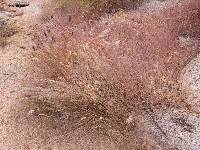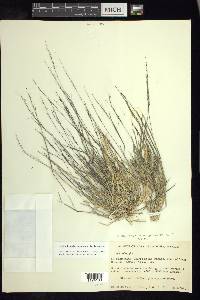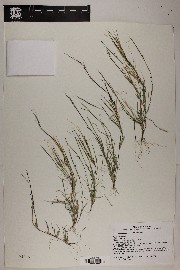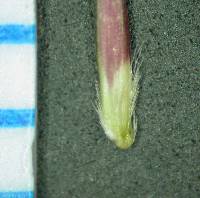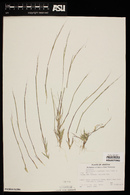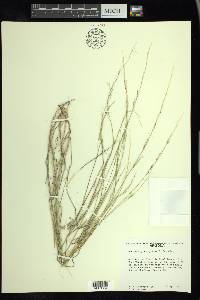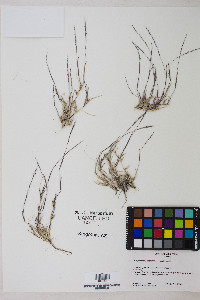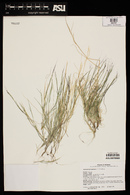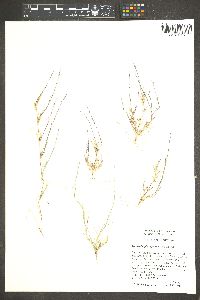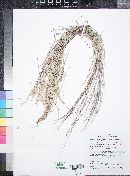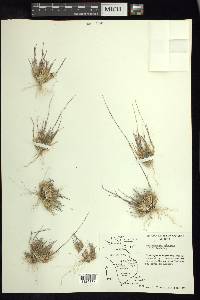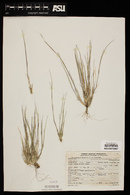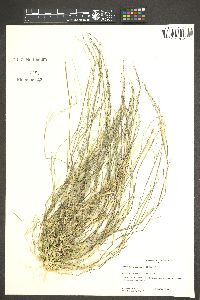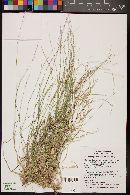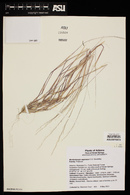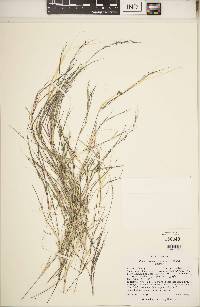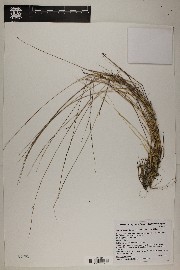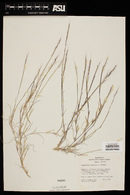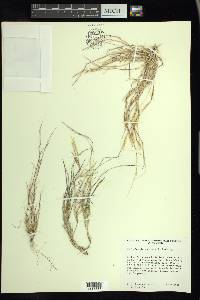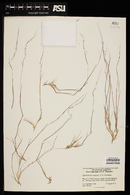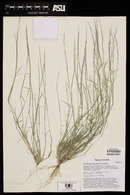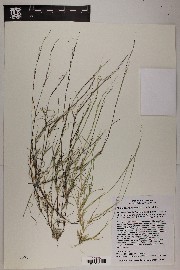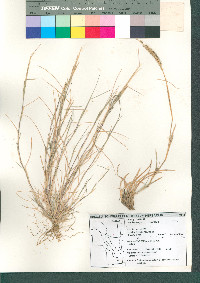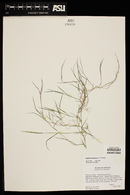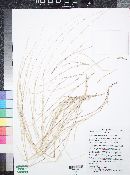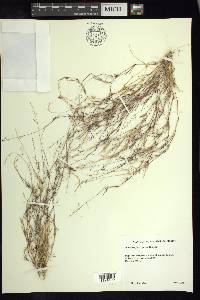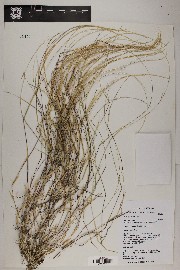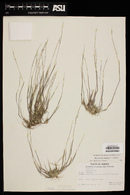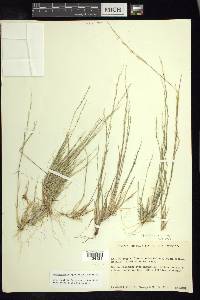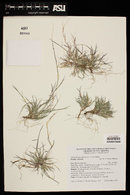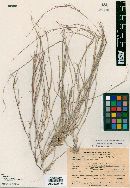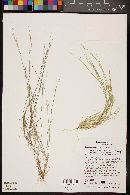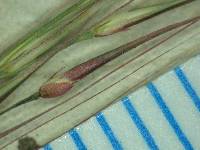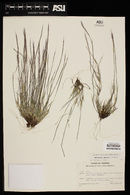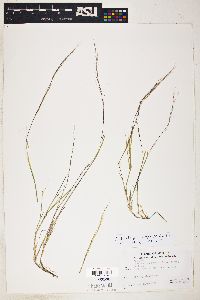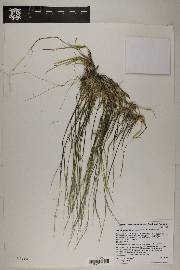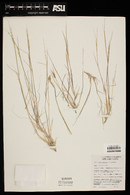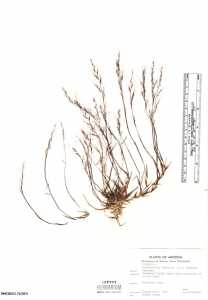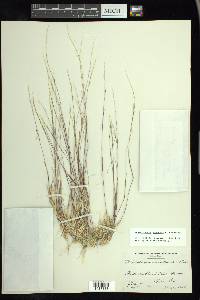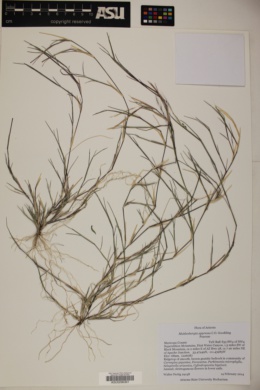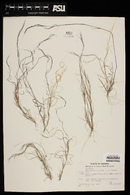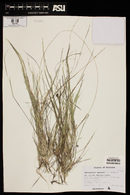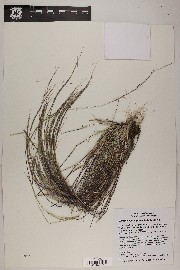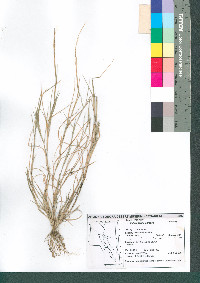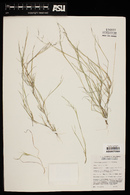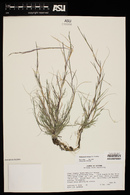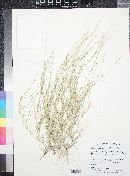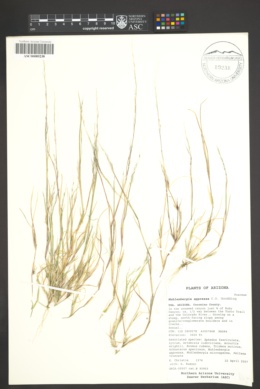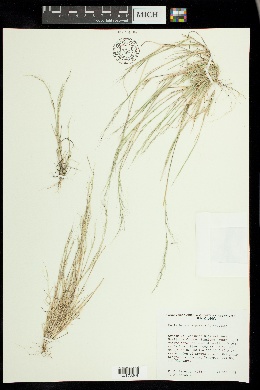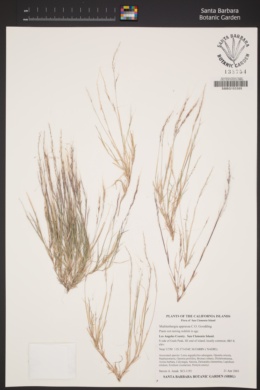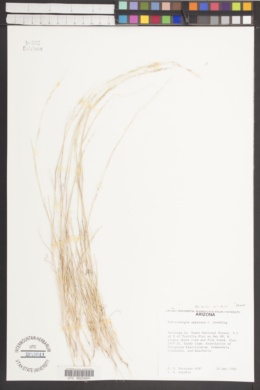
|
|
|
|
Family: Poaceae
Devils Canyon Muhly, more...spreading littleseed muhly, Devil's-Canyon Muhly
|
Plants annual. Culms 10-42 cm, erect or decumbent, much branched below; internodes mostly scabrous, scabrous or hispidulous below the nodes. Sheaths usually shorter than the internodes, flattened below, glabrous, scabridulous or smooth, striate; ligules 1.5-3 mm, hyaline, acute, lacerate, with lateral lobes; blades 1-5(7) cm long, 0.8-1.6(2) mm wide, flat or involute, scabrous abaxially, pubescent adaxially. Panicles 4-23 cm long, 0.5-2 cm wide, usually partially included in the subtending sheaths at maturity; primary branches 20-45 mm, ascending, closely appressed; pedicels 1-5 mm, appressed, scabrous; disarticulation above the glumes. Spikelets 4-7.5 mm, borne singly. Glumes 1-2 mm, 1-veined, veins conspicuous, scabrous, and greenish basally, apices obtuse to subacute, often erose; lemmas 4-6.2(7.5) mm, narrowly lanceolate, terete, mostly smooth,scabrous distally, hairy on the calluses and lower 1/4 of the margins, hairs 0.2-0.3 mm, whitish, lemma bodies not appearing 5-veined, apices acuminate, awned, awns 10-30 mm, straight, scabrous; paleas 3.8-5.7(7) mm, narrowly lanceolate; anthers 0.3-1.1 mm, purplish. Caryopses 1.6-3 mm, narrowly fusiform, brownish to pinkish. Cleistogamous spikelets usually present in the axils of the lower leaves. 2n = unknown. Muhlenbergia appressa grows in sandy drainages, canyon bottoms, rocky road cuts, and sandy slopes, at elevations of 20-1750 m. Its range extends from Arizona to Baja California, Mexico. It grows in grama grasslands, oak-juniper woodlands, and chaparral associations. FNA 2003, Gould 1980 Common Name: Devils Canyon muhly Duration: Annual Nativity: Native Lifeform: Graminoid General: Annual with stems 10-42 cm, erect or decumbent, much branched below, internodes mostly scabrous or hispidulous below the nodes. Vegetative: Sheaths usually shorter than internodes, flattened below, glabrous, minutely roughened or smooth, striate; ligules 1.5-3 mm, hyaline, acute, with lateral lobes; blades 1-5 cm long, 0.5-1.5 mm wide, flat or involute, scabrous below, pubescent above. Inflorescence: Panicles 4-23 cm long, 0.5-2 cm wide, usually partially included in the subtending sheaths at maturity; primary branches 20-45 mm, ascending, closely appressed; pedicels 1-5 mm, appressed, disarticulation above the glumes; spikelets 4-7.5 mm, borne singly, glumes 1-2 mm, 1-veined, veins conspicuous, scabrous, and greenish basally, apices obtuse to subacute, often erose; lemmas 4-6.5 mm, narrowly lanceolate, terete, smooth, scabrous distally, hairy on calluses and lower quarter of the margins, hairs 0.2-0.3, whitish, lemma bodies not appearing 5-veined, apices acuminate, awned, awns 10-30 mm, straight. Ecology: Found on sandy canyon bottoms, rocky or sandy slopes from 3,000-5,000 ft (914-1524 m); flowers April-May. Notes: Muhlenbergia is a large and diverse genus primarily distinguished by having single-flowered spikelets with unequal glumes. This species is an annual similar to M. microsperma but differs in having very narrow panicles with closely appressed branches, the lowermost of which are usually partially included in the sheath. Can flower most of the year. Ethnobotany: Unknown Etymology: Muhlenbergia is named for Gotthilf Heinrich Ernst Muhlenberg (1753-1815) a clergyman and botanist from Pennsylvania; appressa means pressed close to or lying flat against. Synonyms: None Editor: SBuckley, 2010 |



